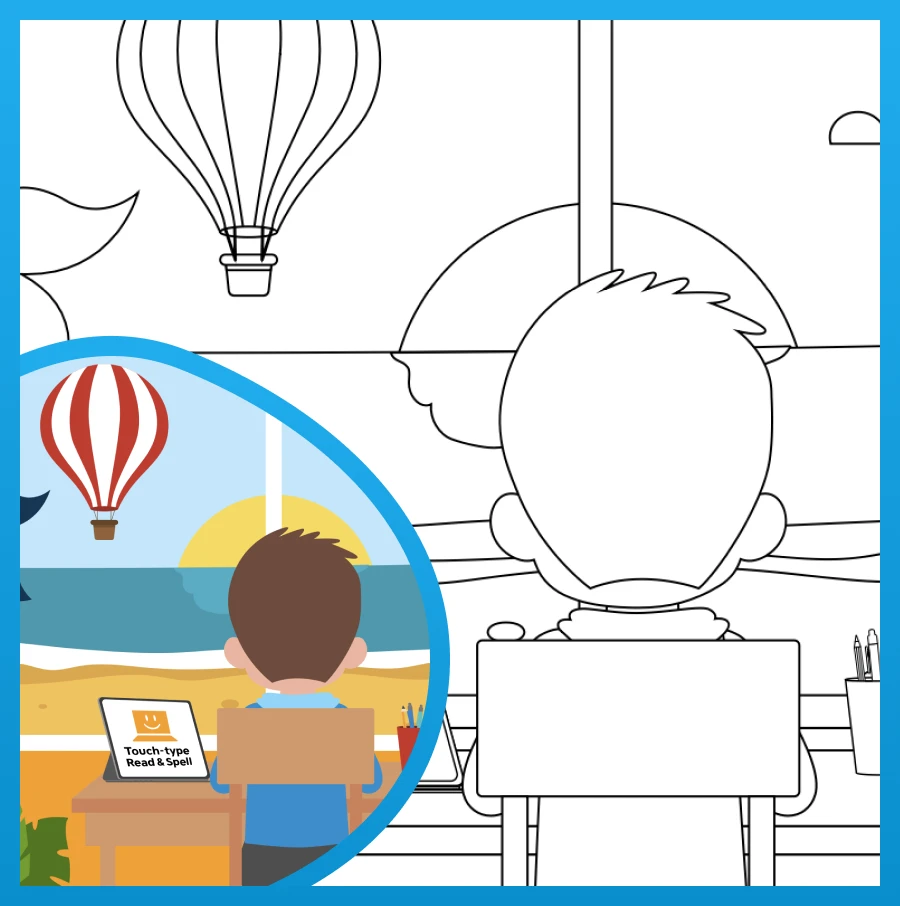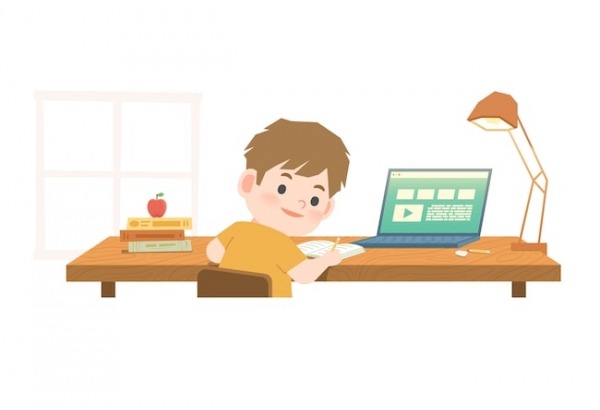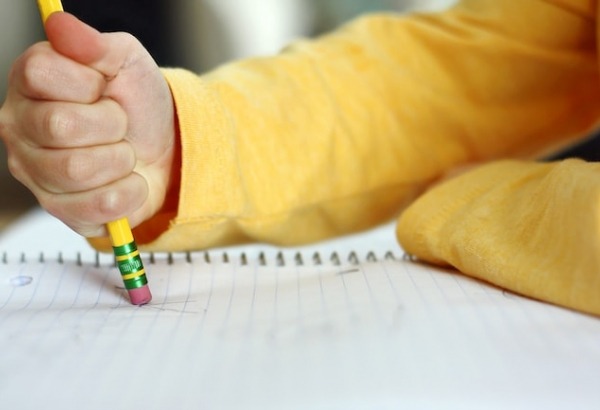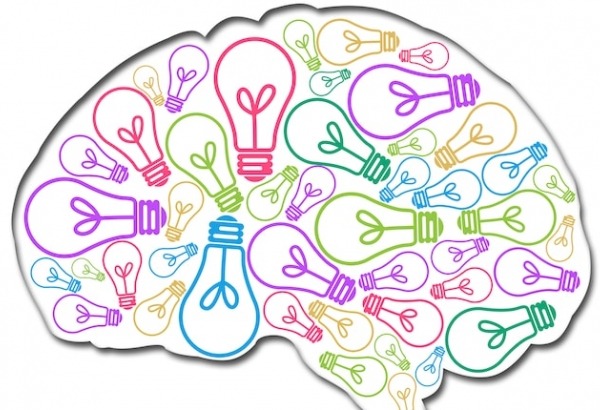Signs your child is dyslexic

A guest post by John Hicks
As a parent of a daughter with dyslexia looking back over six years since her diagnosis, I can remember my daughter’s difficulty with reading words and spelling and how that got in the way of her being able to enjoy learning at school. Let me tell you about the signs that indicated that our child was dyslexic, how I was able to get her through the school system, and how she learned to thrive.
Initial signs of difficulty with reading
As my child developed through primary education we used to read to her at night before she went to bed. My daughter showed no outward signs of struggling, in fact she was a cheerful and friendly girl who had made many friends with other children and on the whole the teachers were satisfied with her progress.
At night though, when reading out stories from series such as the Chronicles of Narnia, I would from time to time ask her to read out sentences and I would notice that she had problems with spelling and sometimes when reading she would start one sentence and then skip a line or two and finish the end of another sentence. Reading would make no sense to her and she would say how much she hated reading.
Then on one occasion my daughter was asked to read out loud in public and she had an emotional breakdown. She wanted to help, but she was physically scared of reading out loud to a crowd of people. Given that she loved acting and singing in front of people, this seemed out of character, so we took this seriously.
An awkward child?
Only with reading did we wonder why Jess was struggling. In retrospect, we saw problems with reading and spelling, and we even saw issues with writing, but as parents we didn’t initially see the signs that our child was dyslexic. At times we felt that she was being awkward or lazy, but this was not the case. Finally, we came around to the idea that our child was experiencing a language disorder like dyslexia.

Secondary education, dyslexia and getting support for reading, writing and spelling
I have since discovered that there are many thousands of girls in the education system who experience difficulty with learning due to dyslexia but who are very good at masking the symptoms of the condition. Because these children are highly intelligent, a learning difficulty is not always the first thing a parent considers. Equally, I believe that dyslexia can become apparent as a learning difficulty at different stages of one’s life. For my daughter, it was in year 8 of secondary education.
When discussing our daughter’s challenges with reading, writing and spelling with her school, the year manager felt that she was not struggling and that she would eventually get pass grades at GCSE level. This didn’t add up, as our daughter was tirelessly doing her best to keep up with what was being taught to her. There was so much effort that didn’t match the gain in attainment I know she wanted to experience.
We pushed harder for support and our school eventually said that if we could prove that she was dyslexic, then they would set aside support. So we learnt our first lesson about having a child with special educational needs. Some schools are more responsive than others, but in our daughter’s case it was important to have a diagnosis in place before the school would consider providing support.
A diagnosis unlocks potential
Once we had a diagnosis with recommendations for support, as parents, it gave us the confidence we needed to be able to talk to teachers about our child’s learning difficulty. Beforehand it was really hard for us seeing our daughter putting more effort into studying than most of the children in her year but getting little back in terms of attainment and satisfaction.
We eventually got the dyslexia support we needed and our daughter is now at university studying a subject that she is passionate about. That support empowered our child to be the adult that she is now.
If you see signs that your child is dyslexic, get in touch with the leading UK charity for dyslexia, the British Dyslexia Association who will be able to advise on how to get a diagnosis and where to get resources that make a difference. A good place to start is this dyslexia resource on the BDA’s website.
Guest-post by John Hicks
John Hicks is a parenting and neurodiversity coach based in Cambridge, UK. John supports more than 700 families with his online content and works with adults and young people with dyslexia who want to unlock their potential and not be held back by the emotional challenges of having dyslexia.
From Read and Spell
No two children with dyslexia present with the same set or severity of symptoms. As discussed in this guest post, there are also different signs to look for at primary and secondary level.
For example, a child reversing letters when he or she is first learning how to write is quite common. But when letter reversals continue beyond the third grade, they may be a sign of dyslexia.
Similarly, reading fluency can take longer for some children to develop. Just because there is a delay, it does not necessarily mean a learning difficulty is present. However, an older child who is still struggling to read words aloud or frequently loses their place on the page may benefit from a phonics intervention.
You might see messy handwriting, poor spelling and a lack of adherence to capitalization and punctuation rules at primary level. This is because children are still developing familiarity with written English conventions. However, at secondary level writing problems could be a sign of dyslexia, dysgraphia or even ADHD.
What’s important is to remember is that the right diagnosis can help a child gain access to the tools and strategies he or she needs to be successful – as well as relieve self-doubt associated with feeling less-able to perform than peers.

Assessment for dyslexia
A word on dyslexia testing: Comprehensive diagnostic assessments can be provided by an educational psychologist or other trained professional and may include the use of psychometric tests along with observations from teachers and family.
What is dyslexia?
Dyslexia is a language-based specific learning difference that often runs in families. Dyslexia can show up in different ways but it commonly affects an individual’s ability to break words down into their component sounds. Dyslexia can also generally affect cognition/ working memory and cause processing delays (1).
According to the NHS “It’s estimated that 1 in 10 people in the UK has some degree of dyslexia.” Phonological dyslexia can make spelling and reading a challenge, and in some cases can affect speaking skills. However, while researchers have found children with a family history of dyslexia may perform slightly worse than their peers on reading measures, they have not found a significant difference in oral language abilities (2). Visual dyslexia may have less of an effect on rhyming skills and phonemic awareness but can affect letter formation and writing ability.
It’s important to recognize that dyslexia is not related to intelligence. Many individuals with language-based learning difficulties are extremely bright and creative thinkers. They may excel in problem-solving and can even be a part of a gifted education program. Learn more about the strengths associated with dyslexia.
Latest research
In a recent study of 11-year-olds with dyslexia (3), children were shown multi-media material in which a picture was either presented with written text, with an audio file, or with both text and an audio file. Performance in terms of learning gains and time spent studying for 26 dyslexic learners was compared against 38 same-age peers.
Results showed no difference in knowledge gains in the three conditions. However, the text only condition resulted in longer study times for dyslexic participants. This research underscores the importance of presenting children with multi-sensory learning opportunities in which information is relayed through a listening exercise, or a listening accompanied by text.
Technology for dyslexic learners
Every individual with dyslexia is unique, which is why there is no one size fits all solution to strategy instruction and accommodations. However, typing is an accommodation that has helped many learners with dyslexia keep up in the classroom, especially at secondary level. This is because touch-typing helps them store a word’s spelling as a series of muscle movements which makes writing more fluent.
Moreover, when typing on a computer a child is able to revise and correct misspelled words without any embarrassing erasure marks. They additionally gain access to spellcheckers and text-to-speech technology.
Having the ability to type can make a big difference when it comes to note-taking as well. That’s because asking a child with dyslexia to simultaneously learn new content and negotiate written language often leads to frustration. But with touch-typing he or she can bring a computer to class and take notes automatically.
Learning touch-typing at home and in the classroom
TTRS is a program designed to help dyslexic students learn to touch-type and improve their reading and spelling skills, as well as self-esteem. It does this by taking a multi-sensory approach in which words are presented with audio, text and visual hand position cues. Research has shown this is an optimal way for dyslexic students to learn.
Hearing words read aloud, seeing words on the screen, and typing the key combinations reinforces spelling and boosts memory for learning. The words typed in TTRS are also carefully organized to teach phonics. As a child learns to type, he or she gradually builds up implicit knowledge of English spelling conventions.
Learn more about the benefits of touch-typing for learners with dyslexia.
Share your story with us
Do you have a child who has dyslexia? What were the first signs you noticed that indicated a language-based learning difficulty might be present? What advice would you give other parents who are embarking on the road to diagnosis and classroom accommodations? Which tips do you have on approaches to strategy instruction? Please share your story with us.
References
1) Knoop-van Campen, C. A. N., Segers, E. & Verhoeven, L. (2018). How phonological awareness mediates the relation between working memory and word reading efficiency in children with dyslexia. Dyslexia, 24(2), 156-169.
2) Van Viersen, S., de Bree, E. H., Zee, M., Maassen, B., van der Leij, A., de Jong, P. F. (2018). Pathways into literacy: the role of early oral language abilities and family risk for dyslexia. Psychological Science, 29(3), 418-428.
3) Knoop-van Campen, C. A. N., Segers, E. & Verhoeven, L. (2018). The modality and redundancy effects in multimedia learning in children with dyslexia. Dyslexia, 24(2), 140-155.
For learners who struggle with dyslexia
TTRS is a program designed to get children and adults with dyslexia touch-typing, with additional support for reading and spelling.
Chris Freeman

close
Can an Orton-Gillingham approach to literacy help your child?
Take a short quiz to find out!
TTRS has a solution for you
An award-winning, multi-sensory course that teaches typing, reading and spelling

How does TTRS work?
Developed in line with language and education research
Teaches typing using a multi-sensory approach
The course is modular in design and easy to navigate
Includes school and personal interest subjects
Positive feedback and positive reinforcement
Reporting features help you monitor usage and progress














